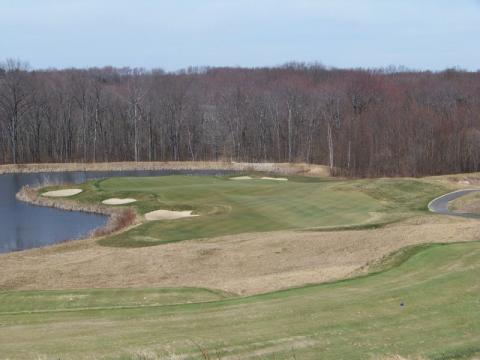 The par 3 2nd hole at Oxford Greens in Oxford, CT.
The par 3 2nd hole at Oxford Greens in Oxford, CT.
This is the time of year in New England when green fees at the best daily fee golf courses come pretty close to matching the temperatures -- say around 50. Managers of these golf courses need to start generating income two months before turf conditions reach their peak, and they are not going to risk turning away paying customers -- or ticking them off so much that they won't return when green fees are $100. If you just want to start to get your swing in shape in early April at a bargain price on a decent layout, this is your time, notwithstanding the bumpy, often freshly aerated greens.
To wit, my son Tim and I played 18 at Oxford Greens in central Connecticut yesterday. The swirling golf course, which definitely favors Lee Trevino types who move the ball left to right, is surrounded by a restricted-age community fashioned by the Del Webb organization. Tim will have a full golf review here in the next day or two, and I will include my thoughts on the surrounding homes (and maybe revisit the notion of age-restricted communities). The photo above, of the stunning second hole at Oxford Greens, should suffice for now.























